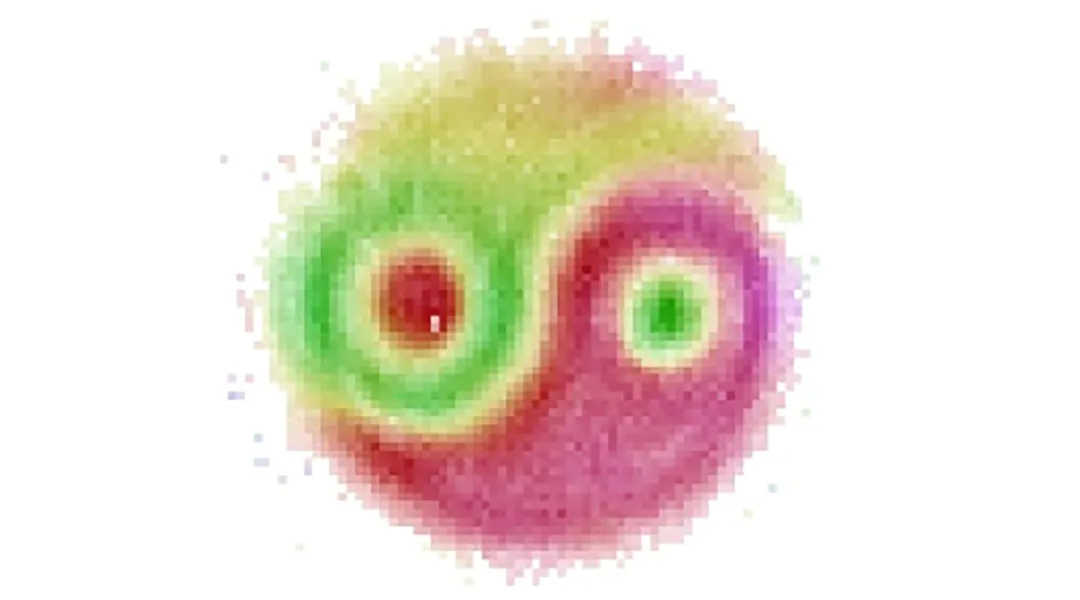Quantum physics, the realm of science that describes the Universe at the smallest scales, is known for its counter-intuitive phenomena that seem to defy every law of physics on an everyday scale.
Arguably none of the aspects of quantum physics are as surprising or as troubling as entanglement, the idea that two particles can be connected in such a way that a change to one is instantly reflected in the other, even if the two particles are at opposite sides of the Universe. It’s the word “instantly” that troubled Albert Einstein enough to describe entanglement as “spooky action at a distance”.
That’s because when developing special relativity, Einstein introduced the concept that the Universe has a set speed limit — the speed of light in a vacuum — for the transfer of information. The instantaneous nature of the interaction between particles seems to work faster than light. And yet, as “spooky” as it may be, in the around 100 years since its inception, entanglement has been proven to be a real aspect of the Universe.
A new development will help cement the “realness” of quantum entanglement even more. A team of researchers from the University of Ottawa and the Sapienza University of Rome have demonstrated a novel technique that allows the visualization of an entangled pair of photons — particles of light. More accurately, what the scientists have manifested and what they describe in a paper published in Nature Photonics is the wavefunction of this quantum system.
“In our context, we refer to wavefunction as a spatially resolved specification of the state of a quantum system. It tells us everything we can know about the quantum system of interest,” said University of Ottawa postdoctoral fellow Alessio D’Errico. “More precisely, the wavefunction allows us to calculate the probability of any measurement outcome.
“In the case of two entangled photons, knowing the wavefunction will tell us what is the probability of finding, at the same time, one particle in point A and the other particle in point B.”
Entanglement and holography
D’Errico explained that the team’s work was founded on the technique of digital holography, a process that is commonly used to retrieve the shape of 3D objects from scattered light and to reconstruct the phase of laser beams.
Holographic techniques like this rely on the fact that light can be modeled as a wave, and when two waves overlap and are “in phase”, where a peak means a peak or a trough meets a trough, this feature of the wave is amplified — a phenomenon called constructive interference.
But, when the light waves are out of phase, a peak meets a trough, and the features cancel each other out — this is called, predictably maybe, destructive interference.
The inference pattern that results from the overlapping of two light waves — one known (a reference wave) and the other unknown — can give information about the unknown wave, allowing it to be reconstructed. This means that holographic techniques can reconstruct a 3D object from 2D images. The team extended the technique of digital holography to solve the problem of reconstructing the state of two entangled photons.
“Our idea was about finding a way to understand the phase and intensity of a ‘wave’ made of only two entangled photons. To do this, we realized that we needed an appropriate reference wave, and the best one is another two-photon state, which, of course, we have to assume to know perfectly,” D’Errico said. “This reference wave can be obtained from standard well-studied sources. The next step is superimposing the two waves in such a way that, on the measurement stage, we cannot tell which source each photon is coming from.”
The team found that the information about the unknown source wasn’t encoded in the intensity distribution of the two superimposed waves but was locked up in the distribution of the coincidences.
“Coincidence images tell us where photon pairs arrive on a detector at the same time,” D’Errico added. “The analysis was allowed by a new camera technology where each pixel can give us not only the number of detected events but also track their arrival time with a resolution of one 1000000000th of a second (a nanosecond), which is enough to detect ‘coincident’ photons.”
The resultant image of the wavefunction of these entangled photons is strongly reminiscent of a Yin and Yang symbol, which in Chinese culture represents the concept of interconnected forces. The work has far more value beyond mere aesthetics, however. It also has implications for quantum technologies like quantum computers that rely on wavefunctions and entanglement to operate.
“Any quantum technology that is based on the generation and transformation of the state of two or more particles will have to be tested by measuring the wavefunction of the final state,” D’Errico concluded. “This technique has also the potential to inspire new imaging techniques that go beyond the resolution limits of classical optics.”
Reference: Zia. D., Dehghan. N., D’Errico. A., et al, Interferometric imaging of amplitude and phase of spatial biphoton states, Nature Photonics, (2023), DOI: 10.1038/s41566–023–01272–3
Feature image credit: Biphoton state holographic reconstruction. Nature Photonics (2023). DOI: 10.1038/s41566-023-01272-3

















